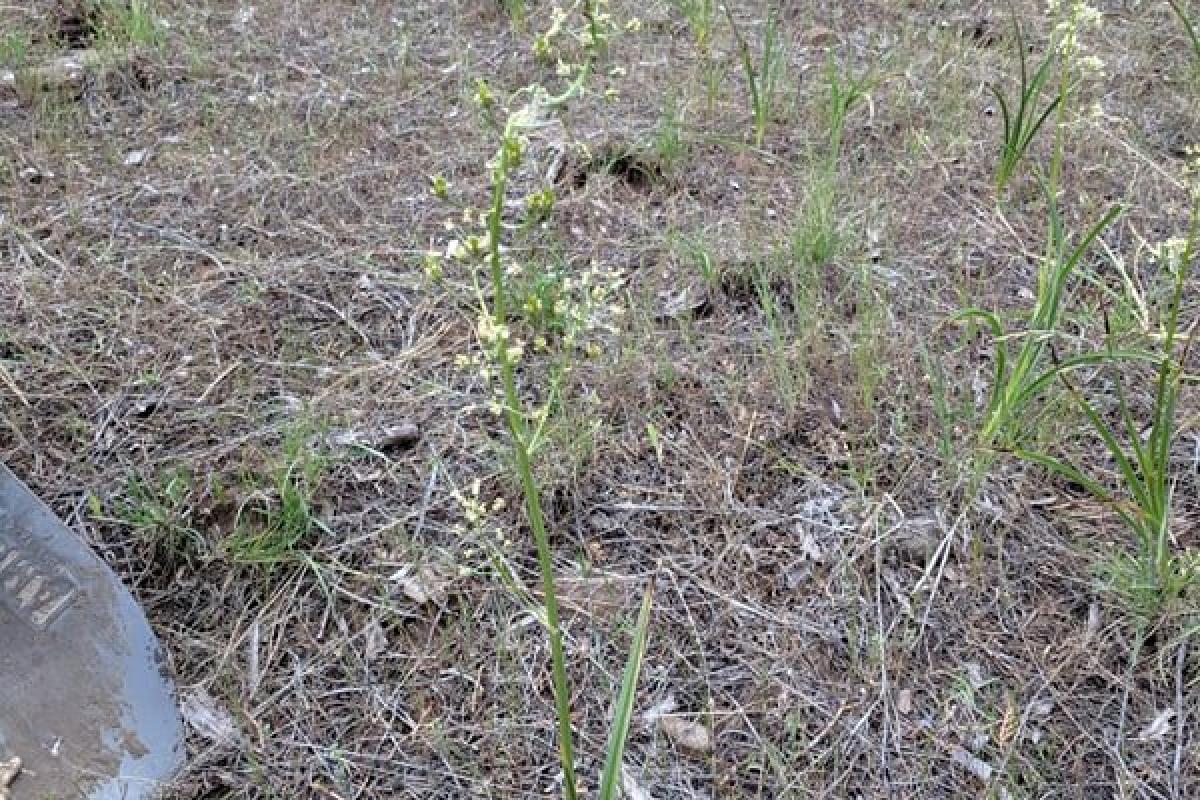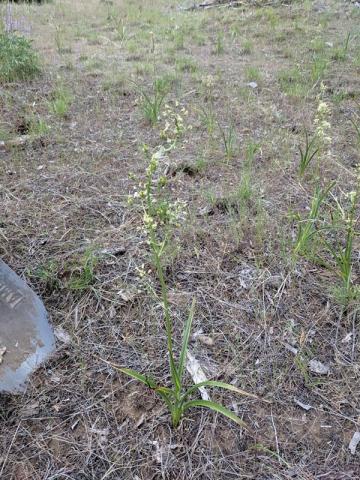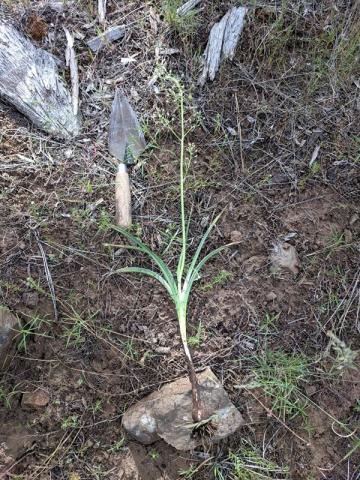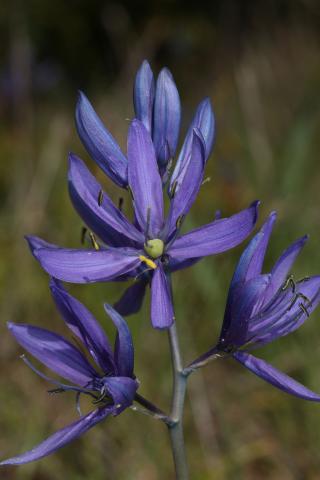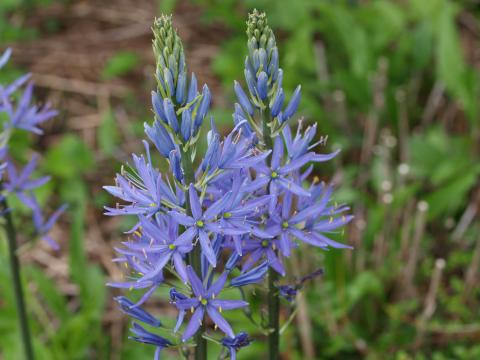Toxicoscordion venenosum
Toxicoscordion venenosum (S. Watson), syn. Zigadenus venenosum (Brasher 2009), is not an edible geophyte, but rather an extremely poisonous perennial herb. Toxicoscordion venenosum is colloquially called death-camas for its close resemblance to the other Camassia species (Turner 2007:181). The flowers are small and cream-colored, growing in a tight, pointed luster. The bulbs resemble onions but do not have the common onion smell.
Bulbs have a black tunic are very similar in appearance to other Interior Northwest bulbs, ranging from 1.5 to 2.5 cm in length and 0.75-1 cm in width.
Death camas is considered extremely toxic by all groups. Turner et al. (1980) report that the Okanagan and St’at’imc used the mashed bulbs as an arrow poison.
WARNING: All parts of this plant is poisonous - do not eat! Death camas may be confused with other Camassia spp. (camas) plants - always be careful with identifications.
Bryce et al. (2019) shared that in coastal fields, death camas was annually rotated through camas plots (Camassia spp.) as a means of marking harvesting ground ownership.
Vernally wet meadows, often in proximity to Camassia quamash (common or black camas).


